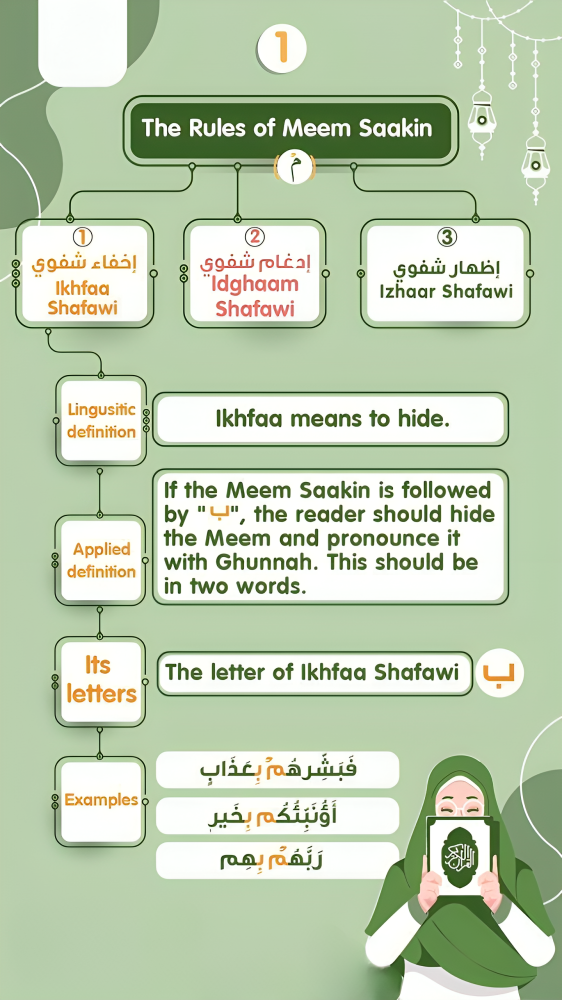Waqf (Stops) in Tajweed:
Waqf (وقف) is a crucial aspect of Quranic recitation that directly impacts both the beauty and meaning of the sacred text. In this comprehensive guide, we’ll explore the various types of stops in Tajweed and their significance in proper Quran recitation.
What is Waqf?
Waqf literally means “to stop” or “to pause” in Arabic. In Tajweed terminology, it refers to stopping at the end of a word and temporarily discontinuing the recitation, usually to take a breath. The proper application of Waqf is essential as it can significantly affect the meaning of the verses being recited.
The Importance of Waqf
Understanding and implementing proper stopping points is crucial because:
- It helps maintain the intended meaning of the Quranic verses
- It allows the reciter to breathe naturally without disrupting the flow
- It enhances the beauty and clarity of the recitation
- It helps listeners better understand the message
Types of Waqf
1. Waqf Tam ( الوقف التام ) – Complete Stop
- This is a complete stop where both the word and its meaning are complete
- The following word has no grammatical or meaningful connection to the previous one
- It is recommended to stop here
- Example: At the end of a complete story or verse
2. Waqf Kafi (الوقف الكافي ) – Sufficient Stop
- The meaning is complete, but there might be a slight grammatical connection
- It is permissible to stop here
- Usually occurs at the end of verses or major phrases
3. Waqf Hasan ( الوقف الحسن) – Good Stop
- The words make complete sense, but are grammatically connected to what follows
- It is permissible to stop here if needed (e.g., to take a breath)
- Continuing is preferred if possible
4. Waqf Qabih (الوقف القبيح ) – Inappropriate Stop
- Stopping here would alter or distort the meaning
- Not permitted unless absolutely necessary (like running out of breath)
- Must return to complete the meaning when resuming
Common Stop Signs in the Quran
The Quran contains various symbols to guide reciters on where to stop:
- م (Mandatory stop)
- ط (Preferred stop)
- ج (Permissible stop)
- ز (Permitted stop)
- ص (Permitted stop with preference to continue)
- لا (No stop)
- ⸫ (Either stop at first or second mark)
Guidelines for Proper Waqf
- Planning Ahead
- Look ahead while reciting to identify suitable stopping points
- Take breaths at natural breaks in meaning
- Avoid stopping in the middle of connected phrases
- Proper Breathing
- Take sufficient breath at appropriate stops
- Maintain a steady pace of recitation
- Never rush to reach the next stopping point
- Rules for Stopping
- Words ending with sukoon remain unchanged
- Words ending with tanween change to sukoon
- Round ta (ة) changes to ha (ه)
- Long vowels maintain their length
Common Mistakes to Avoid
- Stopping at inappropriate places that change the meaning
- Taking too many breaths that disrupt the flow
- Rushing to reach stopping points
- Not observing the proper stopping signs
- Making incorrect pronunciation changes when stopping
Practical Tips for Improvement
- Study under a qualified teacher
- Practice with recorded recitations
- Memorize common stopping points
- Pay attention to punctuation marks
- Regular revision and practice
Conclusion
Mastering Waqf is essential for proper Quran recitation. It requires dedicated study, practice, and attention to detail. Remember that proper application of stops not only enhances the beauty of your recitation but also ensures that you convey the intended meaning of Allah’s words accurately.
Whether you’re a beginner or an advanced student of Tajweed, continuous practice and guidance from qualified teachers will help you perfect your understanding and implementation of Waqf rules.
For more detailed information about Tajweed rules and Quranic studies, visit Baytul Quran.





